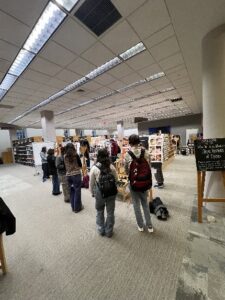by John Daugherty
I just finished reading Pepper Travers’ excellent blog entitled “Unpacking Racism in Ethical Eating”. In it she refers to the same articles that prompted my post.
Pepper begins her blog by saying that food ethics is a much more complex theme than she had previously expected; but she did a great job of outlining many of the competing forces in this discussion. I want to riff a little more on that idea with a brief reference to “Intersectionality”.
This term, introduced by Kimberle’ Crenshaw in 1989, explains how various social identities, like race, class, gender, and sexuality, overlap and interact to create unique experiences of privilege and oppression. These intersections compound the disadvantages created by existing power structures for all marginalized groups. I learned about this term in a hip hop culture lecture here last semester, discussing discrimination against women. She built on statements made by Audre Lorde in the 1970’s, when at a meeting of women’s rights activists, she berated the academic arrogance of ignoring the many differences among women, along lines of the various social identities, by not bringing such representatives to the table.
“As women, we have been taught either to ignore our differences, or to view them as causes for separation and suspicion rather than as forces for change. Without community there is no liberation, only the most vulnerable and temporary armistice between an individual and her oppression.” Also, “What does it mean when tools of a racist patriarchy are used to examine the fruits of that same patriarchy? It means that only the most narrow perimeters of change are possible and allowable.” (Lorde. 1979)
In their exhaustive article “Notes on the Practice of Food Justice” Slocum and Cadieux endeavored to bring many men and women to the table with their interviews, but we (in the U.S.) haven’t done that in the structuring of our food systems. Indeed, we find only a dearth of that in the structuring of our own government. We see fits and starts of inclusiveness in our decision making and although we forgive the use of language and cling to the ideals expressed in our Declaration of Independence (“all men are created equal”) and Constitution (…establish justice, …promote the general welfare”) we now are experiencing the fit of ”universality” of chauvinist neoliberal white men. It is now decreed that what is good for such people is good for everyone.
We see this happening in many spheres. Quoting from the last paragraphs of Slocum and Cadieux (2015), “ The elements we have proposed are not a recipe; they are a process whereby people with greater privilege know, perhaps feel, and definitely act on the way that food is situated within systemic processes that disadvantage people of color, women, the impoverished and disabled. In her book on climate justice activism, Naomi Klein provocatively argues: …fighting inequality on every front and by multiple means must be understood as a central strategy in the battle against climate change”… “[t]hat means that a fight for a minimal carbon tax might do a lot less good than, for instance, forming a coalition to demand a guaranteed minimum income” (Klein 2014: 94, 461).
We see her proposal as applicable to the U.S. food movement as well. And the path forward will be hard. In a recent interview, Ken Burns, author of “The American Revolution” (PBS) stated that although he hopes he would have stood with the first patriots of our country, “would I be willing to fight for a cause, die for a cause? I think it is important to say we don’t actually know who we’d be at that moment”. Consider our present moment; and the Presidential attacks on everything DEI and on the great institutions which encourage our reading of articles such as those above. I believe that, for us, the time for such decisions may soon be coming. In our preparation for November, we can hone our questions and arguments to include marginalized members of our society in our planning to improve food justice. We can support those running for elective office who demonstrate concern about our need to support implementation of sustainable ways to improve access to nutritious food for all members of our local, regional, and national communities.
Citations:
1. Britannica AI, “Intersectionality”
2. History is a Weapon.com, “The Master’s Tools will never dismantle the Master’s House”, Audre Lorde, 1979.
3. Slocum, R., & Cadieux, K. V. (2015). Notes on the practice of food justice in the U.S.: Understanding and confronting trauma and
inequity. Journal of Political Ecology, 22(2), 27–52.











